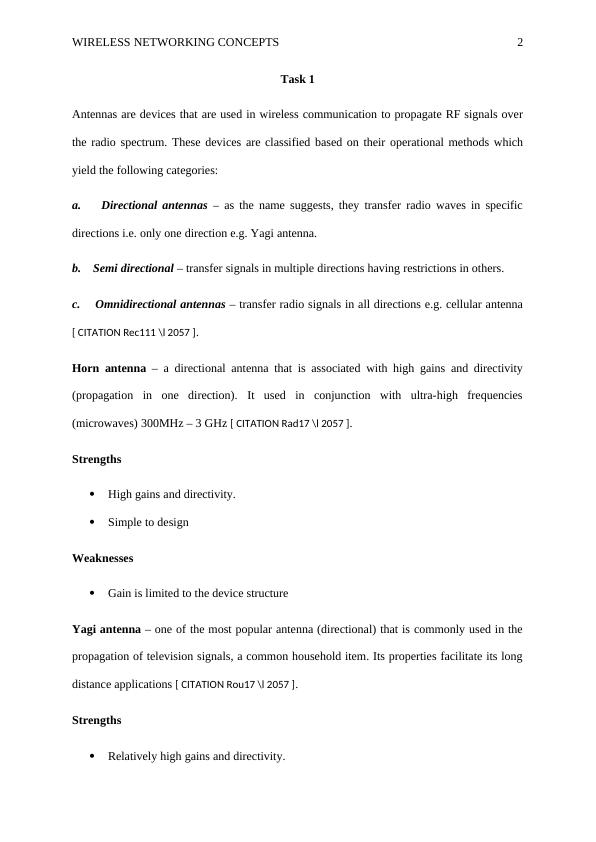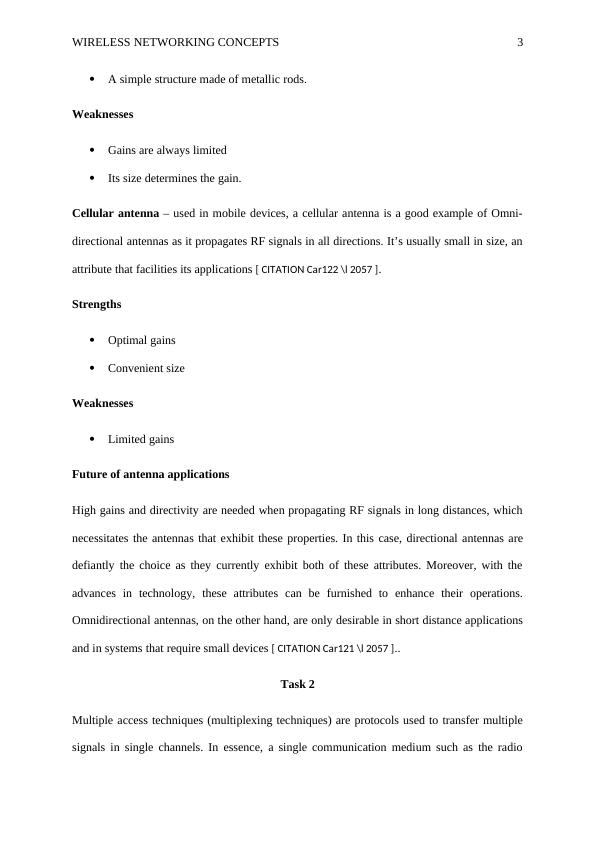Assignment: Wireless Networking Concepts
7 Pages1184 Words75 Views
Charles Sturt University
Wireless Networking Concepts (ITC 513)
Added on 2020-02-24
About This Document
ITC 513 - This subject covers a wide range of topics in wireless communications, including protocols, transmission methods, and current wireless networking standards. They analyze wireless networking concepts and their applications in real-life situations and describe the wireless signaling techniques and radio frequency communications.
Assignment: Wireless Networking Concepts
Charles Sturt University
Wireless Networking Concepts (ITC 513)
Added on 2020-02-24
ShareRelated Documents
End of preview
Want to access all the pages? Upload your documents or become a member.
IT376 - Types of Antenna and Strength Weakness of Antenna
|6
|965
|239
Assignment 1 2 ASSIGNMENT 1 2 Assignment Antennas Antennas
|6
|1002
|233
IT-376 - Advance in Wireless Technology - Assignment
|7
|1274
|300
IT 362 - Assessment On Wireless Communication
|7
|1369
|45
41092 - Different Types of Antenna - Assignment
|5
|891
|58
ECE 325 - Type of Antennas | Wireless technology
|7
|1313
|101



